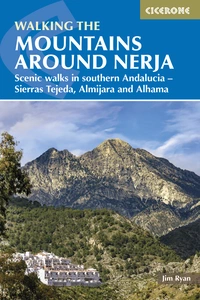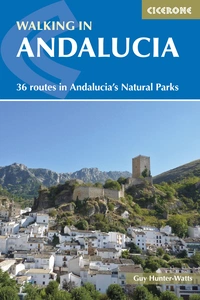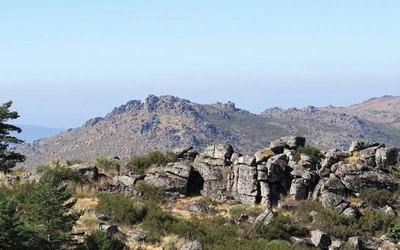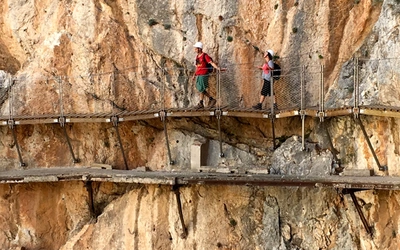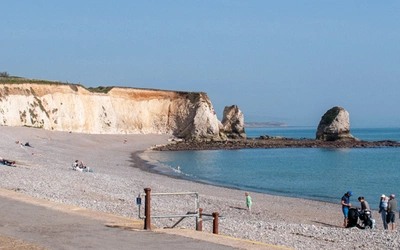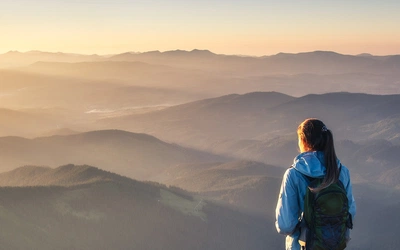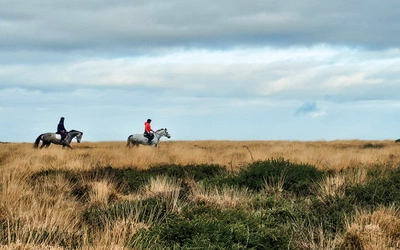The mountains of Nerja in southern Spain
Above the holiday towns of Nerja and Vélez-Málaga on the Costa del Sol lies the mountainous National Park of the Sierras de Tejeda, Almijara y Alhama.
Spring arrives early in Nerja. It was mid-February, and the warm air on our faces as we stepped off the plane in Malaga was wonderful after the cool drizzle we had left behind in Manchester. We had escaped the Cicerone office for six days exploring a whole new mountain range, and it felt great.
Fifty minutes later we turned off the coastal motorway and drove into Nerja, navigating the labyrinthine streets in search of our apartment. As soon as we dumped our bags, our hosts promptly marched us off to their favourite tapas bar, filling us in on the local highlights on the way. As we walked, we caught tantalising glimpses of sea and mountains at the end of the narrow streets. The Mediterranean was a wonderful deep azure, the mountains steep, wild, and waiting for us. With only a few days in the area, the plan was to sample a few walks in the Sierras de Tejeda, Almijara and Alhama region. This Natural Park is only about the size of the Isle of Skye but packs in more than fifty mountains as high as the Munros (over 3000ft). We were eager to get started.
Our first ‘warm up’ walk was in the Sierra de Tejeda, our chosen route a 30-minute drive away just to the north of the village of Cómpeta, starting deep in a river valley. The scent of flowering rosemary and thyme filled the air. The temperature in the mid- to high teens, ideal for walking, with a breeze keeping us comfortable in just a base layer and light gilet. Contorted limestone outcrops and caves broke free from the scrubby vegetation, and as we climbed higher, views opened up looking back towards the coast.
When we reached Puerto Blanquillo, a saddle at the head of the valley, we met the only other walkers we saw that day. They had just returned from climbing Lucero (1779m), having driven their car up the tortuous gravel track to a small parking area to save time and altitude. We sat on a rock, ate some lunch and considered our options for the rest of the day. We wanted to go higher, but it was clear that getting to the summit of Lucero might leave us running short of daylight at the end of the day, and this was only the warm up walk.
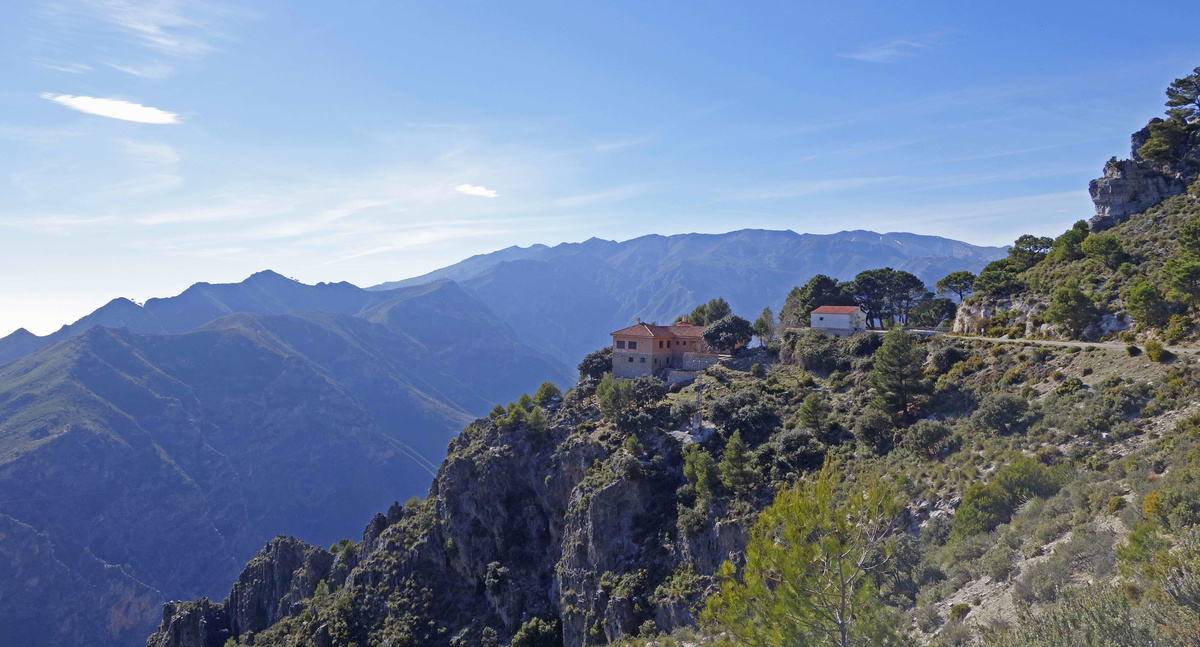
We decided to aim for the col instead and moved on, this time up steeper, rockier ground to gain Puerto de Cómpeta (1404m). The views of the Sierra Nevada to the north east, shrouded in winter snow, were our reward. A lot of snow falls on these mountains. With the highest point, Mulhacén, at 3,478m above sea level, the aptly named Sierra Nevada (‘snowy mountain range’) gets an average of 75cm each winter which lingers late into the spring – perfect for winter mountaineering and snowsports.
Lucero would have to be climbed another day. We were starting to learn that these mountains are bigger than they seem. We decided to drop down through the woods, steeply at first, to a track that contoured high above the valley we had walked up through that morning, skirting round and eventually down to where we had left the car. Views to the south over endless interlocking hillsides stretched hazily towards the Mediterranean, an aromatic breeze filling the air.
As we walked down we passed clusters of pine trees peppered with mysterious giant white cocoons. Only later did we work out what they were. We nearly stepped on what we thought was an old piece of rope lying on the track and suddenly realised that it was moving! This four or five metre-long ‘rope’ was made up of thousands of pine processionary caterpillars, slowly but determinedly seeking a suitable site to metamorphose into moths (Thaumetopoea pityocampa).
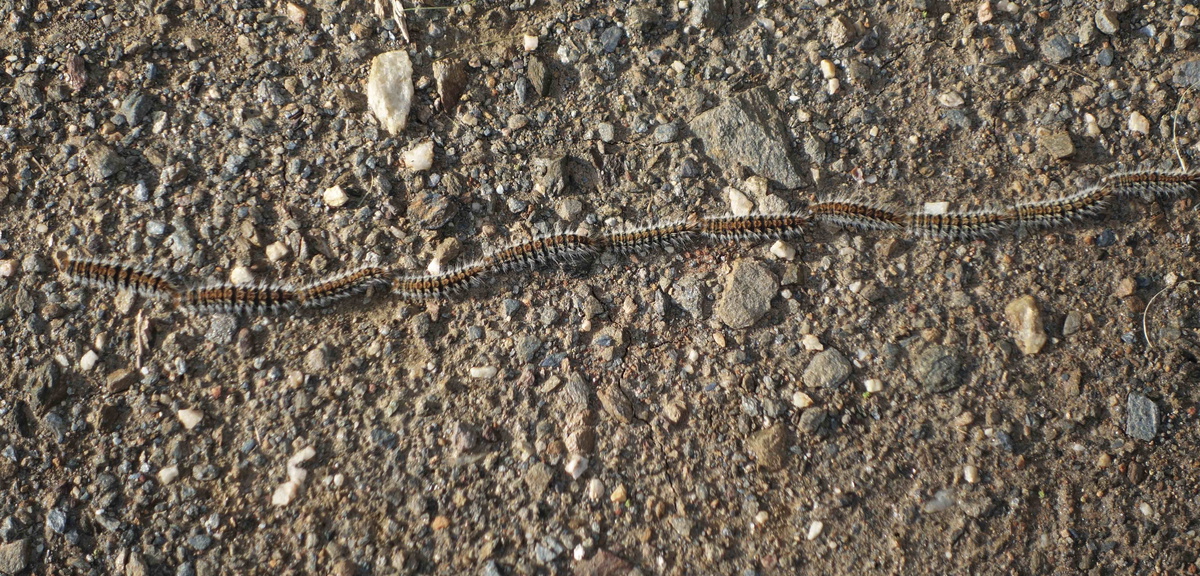
When to go
Officially it never rains in Nerja during June, July and August, at least not in living memory. However, as well as being dry during these months, the weather is hot and the town is packed with tourists. In this high season everything is that little bit more expensive. While the coast is basking in heat the mountains tend to be shrouded in cloud. The Nerjans say that the town has its own microclimate such that it never gets unbearably hot and does not suffer from the high humidity of other coastal towns. The coldest months are January and February when the temperature at night could be as low as 10ºC, but during the day it could rise to the high teens. Rain will fall any time between November and March, but a whole day’s rain is rather unusual.
For hillwalkers, the best time to go is January through to early May. There may be a little snow on La Maroma, but otherwise the temperature is ideal for walking: not too hot and with little threat of rain. The flowers will be in full bloom and the landscape will be green. In early March the flowers will be out, but the rainy season will not have concluded.
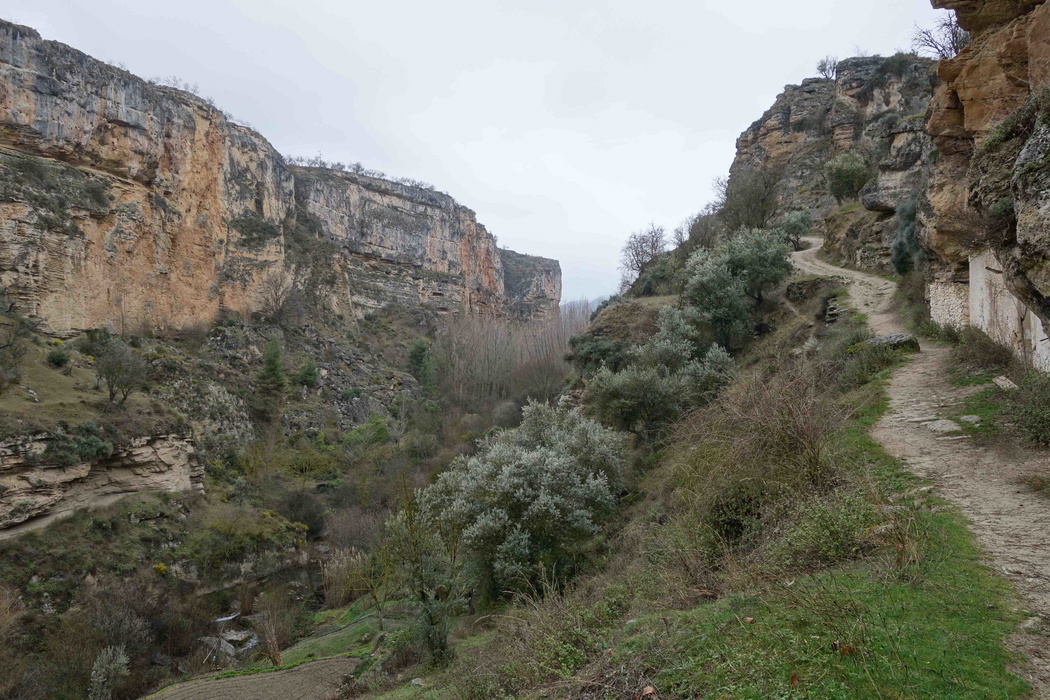
Geology and topography
The mountains of Nerja are largely limestone, but they span 500 million years of geological time. The youngest rocks are the conglomerates that can be seen below the Balcón de Europa, which are only 10,000 years old. The walk to Haza de la Encina, south of Jayena, crosses Pliocene conglomerates that are five million years old. The cliffs of Alhama de Granada are from the Miocene and so are about 15 million years old. Then we jump back in time to the Jurassic rocks, 180 million years old, for the climb at Ventas de Zafarraya.
But the oldest rocks are those that form the main body of the mountains of Nerja and these are 280 to 500 million years in age, spanning geological periods from the Permian back through the Carboniferous and into the Cambrian.
The limestone varies from white soft chalk to hard, blue calcitic rocks. In the area of Fuente del Esparto there are lenses of black limestone shales, while near Lucero the heat from the mountain building has turned the limestone into marble. There are no volcanic rocks in this region. There are areas where the limestone is friable, reminiscent of the Dolomites, and other areas where they are Karstic, with holes cut into the rock by acidic solution. The entire area is dotted with caves of all shapes and sizes.
The Mountains Around Nerja
Scenic walks in southern Andalucia – Sierras Tejeda, Almijara and Alhama
£17.95
Guidebook to 32 day walks in the Sierras de Tejeda, Almijara and Alhama mountains of southern Spain. Easily accessible from Nerja and Velez-Malaga, the routes range from easy strolls to strenuous climbs, including the peaks of La Maroma, El Cielo and Cisne. The mountains are largely limestone, with some summits reaching over 2000m.
More informationThe white mountain villages
Frigiliana, Cómpeta, Canillas de Albaida, Canillas de Aceituno and Salares are just some of the quaint, white-painted villages a short distance from Nerja. Several others are visited on the walks. These villages have a history that spans the occupations by the Romans and the Moors and they still pursue old customs and a pace of life that reflects the traditions of rural Spain.

Getting to Nerja
Nerja is a one-hour bus ride from Málaga, a city well served by rail and bus from the remainder of Spain – particularly via the cities of Madrid, Seville and Cádiz – and Portugal, and thence from Europe. Spanish train timetables can be checked and tickets bought online at www.renfe.com and bus times and tickets are available at www.alsa.es.
The airport at Málaga is one of the busiest in Spain with flights into it from almost every country in Europe. Easyjet, Ryanair, British Airways and Aer Lingus all operate regular flights to Málaga from various cities in the UK and Ireland. From outside the airport terminal there is a regular train and bus service into the centre of Málaga, where regular buses run from the main bus station to Nerja. The fares on these buses are remarkably cheap. Málaga Shuttle Bus was an excellent alternative, but, at time of publication, had not resumed after the pandemic.
Nerja is 40 minutes by car from Málaga. A taxi to and from the airport, arranged beforehand, is a little expensive (€70 in 2023) but, shared with others, can be convenient. The airport at Almería to the east is more than an hour from Nerja and is not served as well with buses and car rentals.
Access into the Sierras is generally easiest if you have a rental car. There are some buses but having your own transport is essential if you’re going to make the most of the mountains. The hillsides are steep, almost Nepalese in character. There are some good paths and many are good mountain paths, but just as many are infrequently used, and overgrown with gorse, maquis and other unforgiving spikey things. Add in wild boar excavations, and you can easily find yourself thrashing through vegetation up to your chest, making navigation more a case of heading in a general direction, rather than following a ‘path’.


